Turin, a city with a thousand faces and just as many secrets. What better place to hide them than in plain sight, on the facades of its buildings. Look around, and a tangle of stories will open up to you. Some tales are well-known, others only whispered. Here are ten of them, irreverent, unusual and enigmatic. And with that aura of mystery that can never be lacking in the "city of magic".

10. The House with dragons in Cit Turin
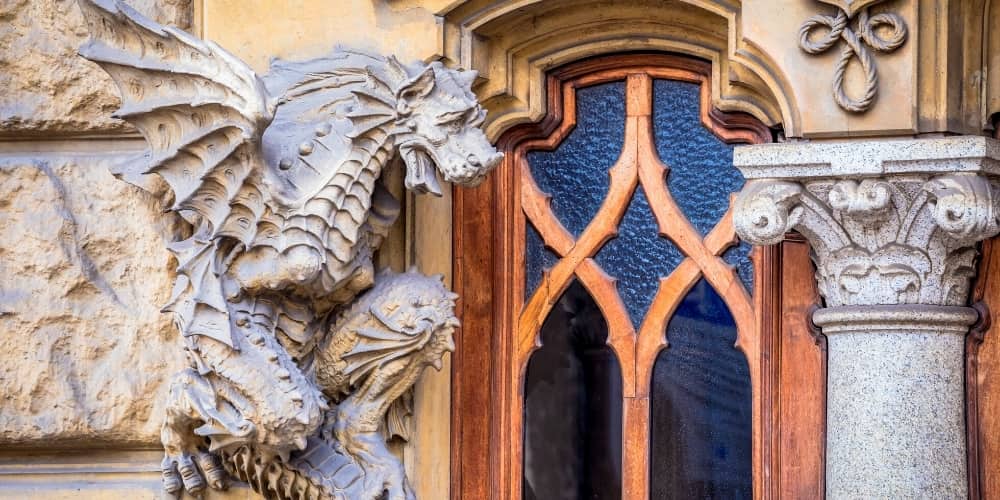
Turin got eclectic at the turn of the 19th and 20th centuries, adding details of French Art Nouveau to its specific Baroque features. It thus became the Italian capital of Liberty, a style that redesigned its architecture during the belle époque.
Wandering around the city, you'll recognise mesmerising buildings adorned with floral friezes, wrought-iron decorations and stained glass windows. Some unique and eccentric are in the Cit Turin district. One in particular dates back to 1922, commissioned by Giovanbattista Carrera to engineer Gottardo Gussoni. It is a five-storey structure that perfectly mixes French neo-Gothic and Art Nouveau.
The name of the residence is Casa della Vittoria (Victory House), a tribute to Italy in the aftermath of the First World War. The name Dragon House comes from the winged figures on the sides of the magnificent entrance door. Other similar decorations representing victorious Italy stands outside and inside the palace.
9. The building with the mysterious hand in Turin
Legends and mysteries are for Turin like its Mole Antonelliana, Fiat and chocolate: a symbol, a distinctive treaty that makes it recognisable. After all, it's known as the "city of magic". The building we are talking about hides a detail that raises many questions.
A beautiful pink-coloured residence stands at number 45 Corso Matteotti, not far from Porta Susa station. It is a palazzo that recalls the Venetian style in its features and architectural details. Take a good look at it: you'll notice pale fingers clutching a sheet of paper protruding above the main door. Whose that hand?
Perhaps it is a discreet sign used in the past to indicate the presence of a brothel inside, but there is a much more imaginative version of the story that we would like to tell you.
It's about a French courtesan, Hebe de Marivaux, as beautiful as penniless but with a host of admirers ready to finance her every request. One evening, a wealthy lover, seduced and bankrupted, clumsily attempted revenge. It happened, however, that the dagger that should have wounded the young woman ended up straight in the trunk of a tree, which was thus renamed "Hebe's tree".
What does the hand on the palace have to do with this story? The small protrusion could be an admirer's tribute to Hebe, or depict the courtesan herself holding a farewell letter to a lover. Which version is the real one? Well, you decide.
8. Palazzo Carignano
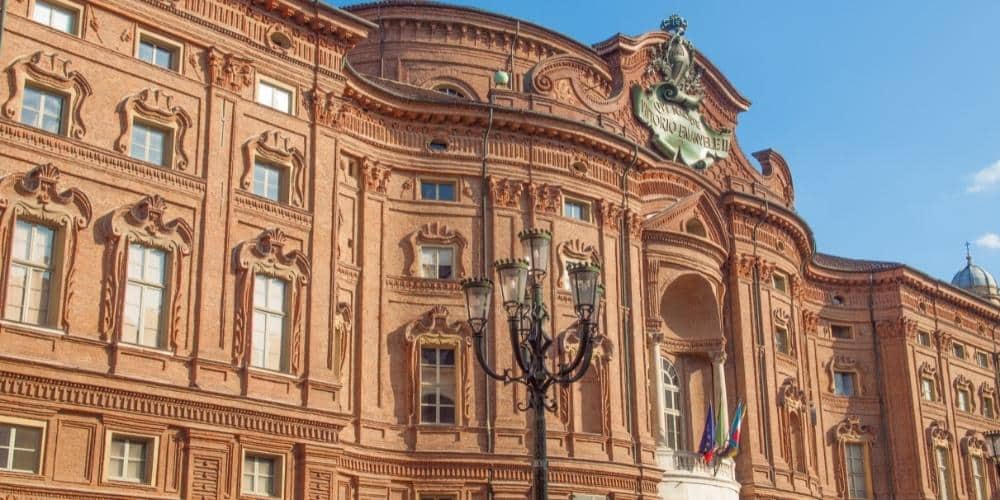
Eleven of the twenty-two Savoy residences on the UNESCO World Heritage List are in Turin: Palazzo Carignano is one of them. In our article, we will also tell you about other buildings included in the circuit, but first, we want to take you to one of the most prominent corners of the city.
We are in the very centre of Turin, Piazza Carignano. The same square hosts the Carignano Theatre, the Egyptian Museum and the Academy of Sciences. Palazzo Carignano is a jewel of Piedmontese baroque, commissioned by Emmanuel Philibert of Savoy and designed by Modena architect Guarino Guarini in 1679.
Its façade is unmistakable, featuring warm, reddish terracotta shades and a wavy silhouette. The 17th-century palace was the residence of the Princes of Carignano until 1831, and subsequently, it became an increasingly important player during the Risorgimento. It was the seat of the Council of State, the Chamber of Deputies of the Subalpine Parliament and later the first Parliament of the Kingdom of Italy.
What to see in Palazzo Carignano? The National Museum of the Italian Risorgimento: paintings, weapons, uniforms, and exhibits dating back to the struggles for Italy's unification. You can also visit the Chamber of Deputies of the Subalpine Parliament, a national monument since 1898.
7. Casa Fenoglio - La Fleur, a hymn to Art Nouveau
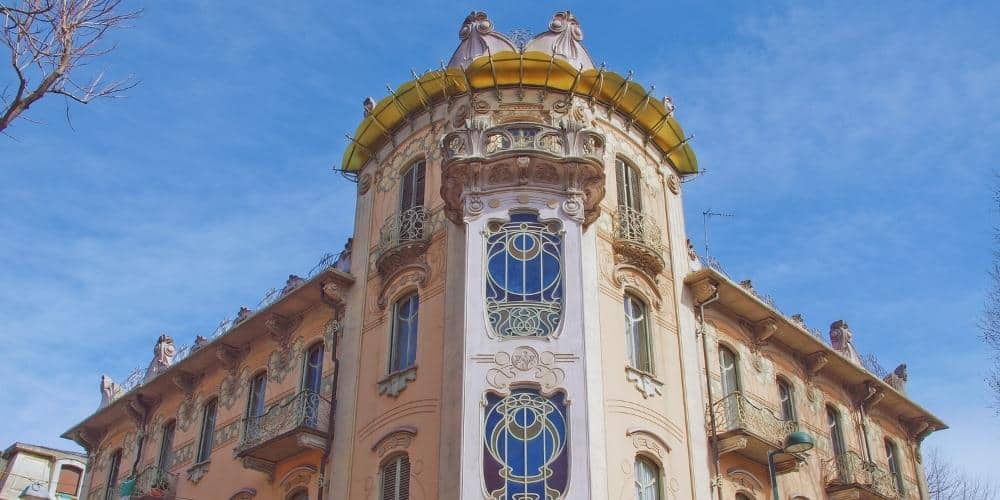
You can only admire it from the outside, but we recommend planning a quick visit to Casa Fenoglio, a symbolic monument to the Liberty style in Italy and the world. You can find the building at the intersection of Corso Francia and Via Principi d'Acaja, not far from La Casa dei Draghi (they are both located in the same district, Cit Turin).
It is a four-storey edifice designed by Pietro Fenoglio between 1902 and 1903. The architect and engineer intended to make his home a manifesto for the new artistic movement, whose great popularity exploded during the International Exhibition of Modern Decorative Art in Turin in 1902.
Fenoglio designed the façade with great detail, drawing on Belgian and French aesthetics. Some of the elements are reminiscent of Hector Guimard's Paris metro entrances.
Following the sale to the French entrepreneur La Fleur, the new owner's name was added to the house.
6. Palazzo Madama
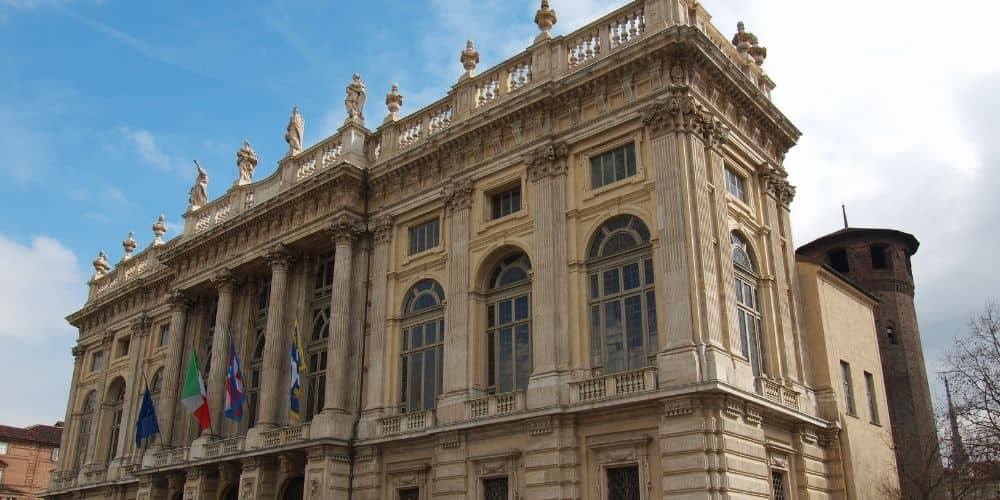
This is one of the most celebrated and emblematic buildings in Turin and Italy, one of those that have seen (and made) the country's history. Palazzo Madama, a UNESCO site, is the marble synthesis of Turin's architecture and style. It rises in the majestic Piazza Castello, just a few steps from the Royal Palace.
The history of this imposing residence, the first Senate of the Kingdom of Italy, is long and articulated: it turned into a fortress and then into a castle from a city gate (the Porta Decumana of Roman times). Try to read its glorious past on the impressive facades, one medieval and the other baroque.
Palazzo Madama houses the Civic Museum of Ancient Art. Make your way through the four floors that regale visitors with sumptuous decorations and an exquisite decorative arts collection.
Why is it called Palazzo Madama? The madames are Marie Christine of Bourbon-France and Marie Jeanne Baptiste of Savoy-Nemours, two extraordinary women who imprinted their taste on the castle, making it a refined and luxurious abode.
5. Villa Scott, in the house that inspired the king of giallo
Art nouveau meets neo-Baroque in an exquisitely Piedmontese mix. Villa Scott, a 1902 design by Pietro Fenoglio, showcases a slew of curved lines, large windows and floral decorations in the Borgo Po district.
Does it feel like you've seen it before? It probably does—Director Dario Argento shot here some key scenes of his 1975 masterpiece, Deep Red. The elegant staircase at the entrance is the same that the protagonist climbs in search of the solution to a disturbing enigma.
While at the time of filming, it was the home of a girls' boarding school run by the Sisters of the Redemption, Villa Fatima. Today the house is once again a private residence. No hunt for the murderer then, but there is nothing to stop you from observing the exterior from the street.
4. Turin's slice of polenta: Casa Scaccabarozzi
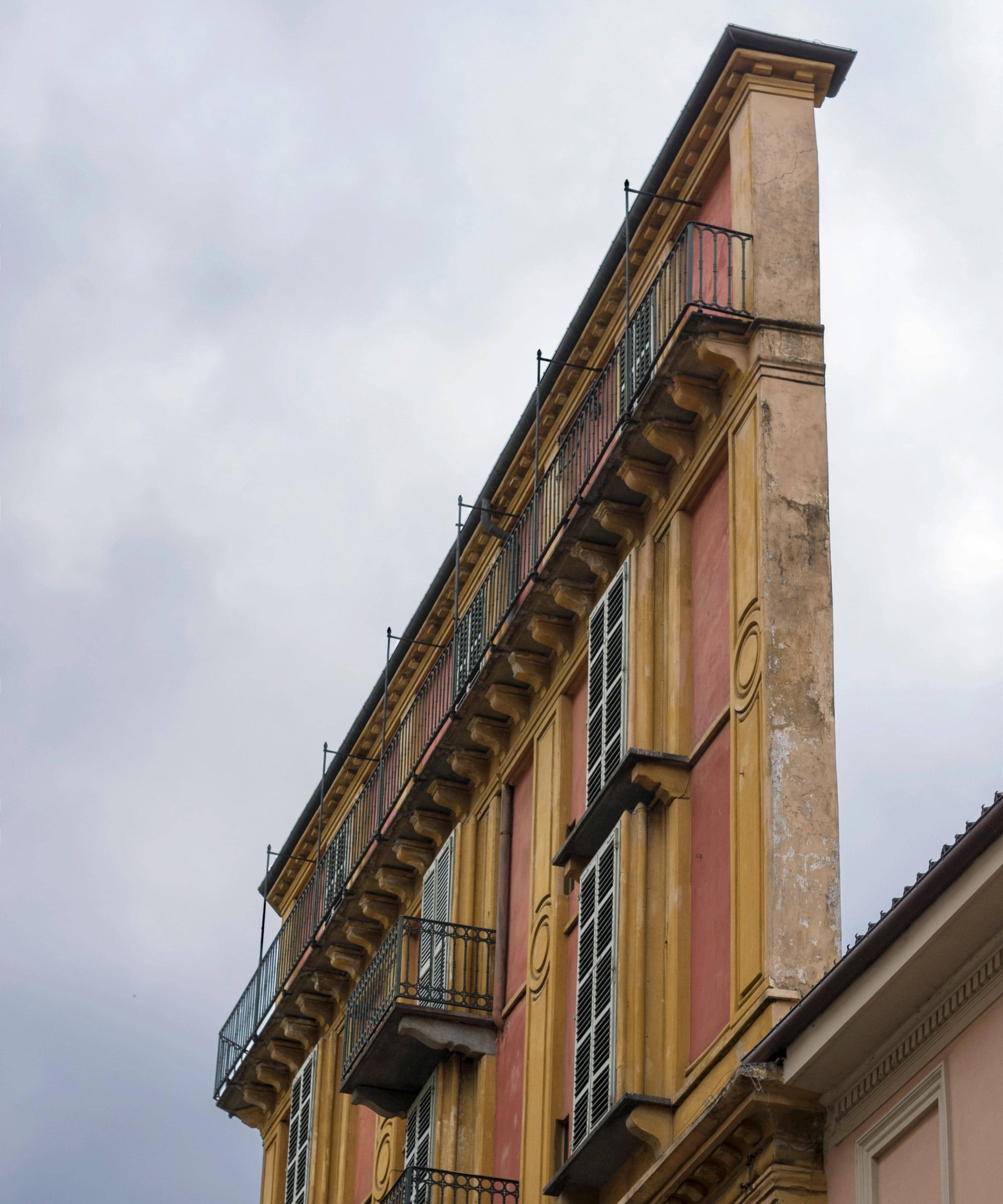
Alessandro Antonelli was a visionary architect who gave Turin iconic buildings. The Mole Antonelliana is his most emblematic work. Still, other singular and curious constructions have entered the hearts of the Torinesi and continue to arouse awe and wonder.
Casa Scaccabarozzi is one of them. If the name doesn't ring a bell, perhaps its nickname, "Fetta di polenta" (Slice of polenta), will sound more familiar. Indeed, this 9-storey building in the Vanchiglia district will remind you of a large portion of polenta, the Italian dish of ground cornmeal.
The similarity is due to its straw-yellow colour and its unusual dimensions, which must have looked even weirder to a 19th-century observer. It is an isosceles trapezium whose measurements are about 4 metres on Corso San Maurizio, 16 metres on Via Giulia di Barolo and 54 centimetres at its narrowest point. And it hangs over 30 centimetres towards the street. Definitely an "impossible house".
How can such a building stand upright? Potential tenants must have wondered the same when the palazzo was completed in 1881: it was hard to find sufficiently interested (or brave enough) buyers.
Casa Scaccabarozzi is about a five-minute walk from Piazza Vittorio: pass by and admire the structure from the outside.
3. Castello del Valentino
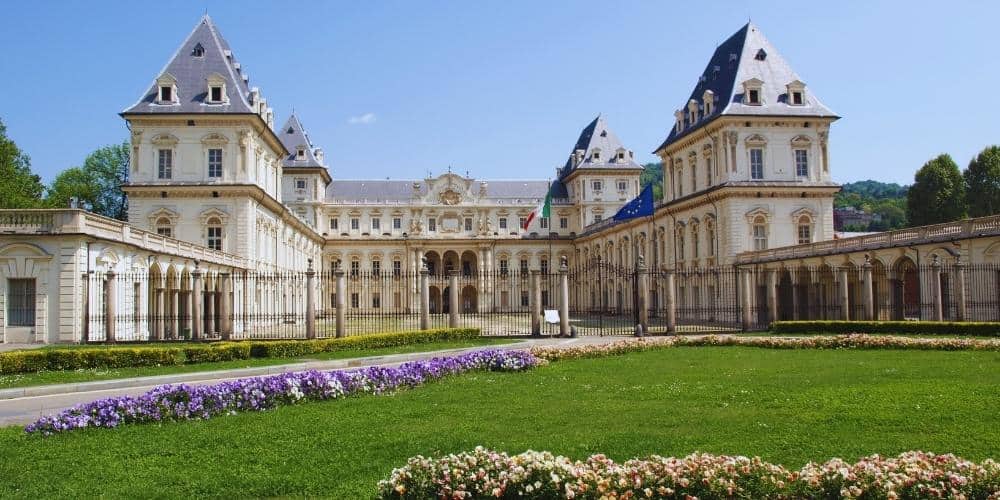
It looks like Paris, but you haven't moved from Turin. The Castello del Valentino is one of the Savoy residences on the UNESCO World Heritage List. The castle is surrounded by the namesake park and hosts the headquarters of the Polytechnic Faculty of Architecture.
Emmanuel Philibert of Savoy bought it in 1564 from Renato Birago. At the time, the building looked like a river villa. Fifty years later, Christine of France, the regent of the Duchy of Savoy, gave a solid French allure to the new palace, which she enriched with typical elements of transalpine architecture.
Just as it shone during its heyday with the "Madama Reale", the magnificent residence withered after Christine's death. Only in the 19th century did it return to prominence, first with the National Exhibition of 1858 and two years later by hosting the Faculty of Engineering.
Why is it called Valentino Castle? According to some sources, the reference is to the area where it rises. The Bealera Del Valentino, a now underground stream, used to run in this valley. Others claim that the name evokes Saint Valentine, whose remains were preserved in a church near the park.
2. Villa della Regina, a vineyard in the heart of Turin

Cross Ponte Vittorio Emanuele I, and you will find yourself in a different landscape from bustling Piazza Vittorio. You are still in the city, but it will be like being miles away.
The Villa della Regina is a magnificent Baroque building, much loved by the ladies of the House of Savoy. During the 18th century, it used to be the queens' residence. The structure is almost like a country abode, surrounded by green Italian style gardens and vineyards. There are very few urban vineyards in Europe; one is on the villa's property.
Prince Maurice of Savoy built the estate. He made it a meeting place for intellectuals and men of science, the so-called Accademia dei Solinghi. The pavilion in which the prestigious club met is located in the park and is shaped like a pagoda.
Take a tour of its ample exterior and luxurious interior halls, including the exquisite Chinese rooms.
1. The Royal Palace of Turin

A UNESCO World Heritage Site since 1997, the Royal Palace is part of the Royal Museums together with the Royal Armoury, the Savoy Gallery, Palazzo Chiablese and the Archaeological Museum.
The works that radically changed the ancient bishop's palace that Emmanuel Philibert of Savoy chose as his residence in 1563 began at the end of the 16th century. Great artists and architects took turns managing the building site and creating the palazzo's decorations, a triumph of gold and Baroque.
After the unification of Italy, the royal family moved to Florence, and the palace in Turin became less and less frequented. With the advent of the Republic, it was virtually abandoned and only in 2007 was it opened to the public.
Filippo Juvarra's Scala delle Forbici (Staircase of the Scissors) is among the most notable and admirable features. Given the difference in height and the particular structure of the room, the court architect's task wasn't an easy one.
Juvarra succeeded in realizing a memorable opera and got a few things off his chest, too. In one of the medallions decorating the staircase, a mask appears with its mouth open and scissors ready to cut out its forked tongue—an act of subtle revenge on his detractors, who couldn't believe in his abilities.
About the author
Written on 30/12/2021

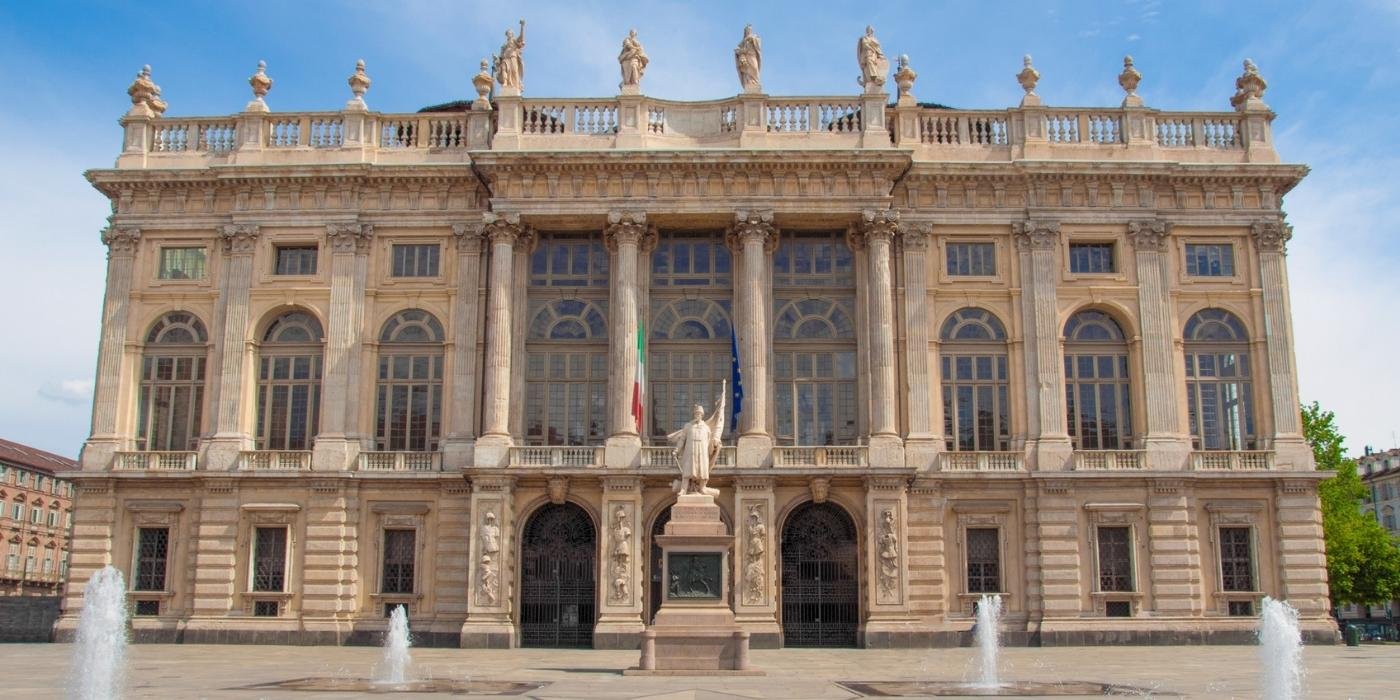
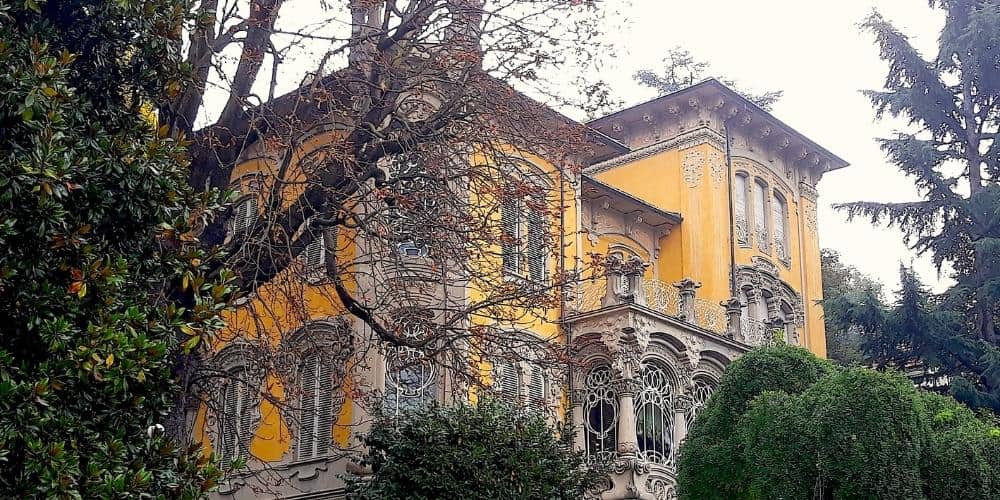

Lorena Calise
Fairytale castles, palaces impossible to be standing, dragons, and a tour on the killer's trail. What's next?